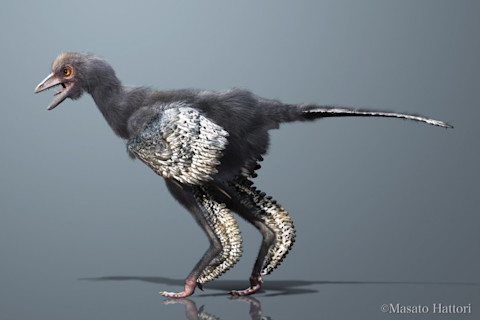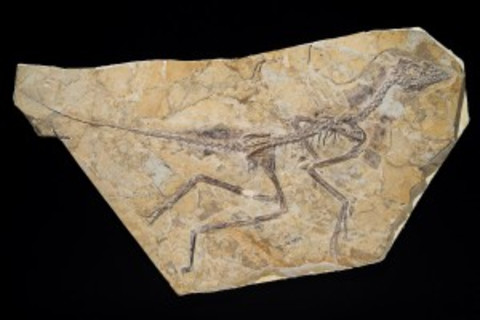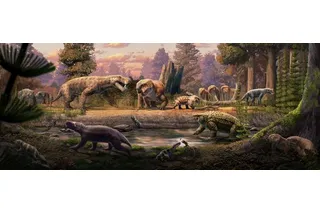By Jon Tennant

Reconstruction of Aurornis xui, a new basal avialan from the Middle/Late Jurassic of China. Credit: Masato Hattori Feathered dinosaurs used to be as valuable as gold dust. Now, so many specimens have been unearthed that museums are overflowing. But for all the specimens, a crucial question has remained unanswered: which species was the original ancestor of birds? A new species found in China has shed light on the answer. The two-foot long Aurornis xui, the “daybreak bird,” fleshes out the relationships between bird-like dinosaurs and, along with its cousin species Archaeopteryx and Anchiornis, restores its lineage as the likely predecessors of birds. The early relationships of a group called Avialae, the dinosaur line leading directly to modern birds, have been a hot point of debate. Over the last few years, with new bird-like dinosaur discoveries, some palaeontologists have even removed the iconic Archaeopteryx and its relatives from the Avialae group altogether. However, this shift would have meant that powered flight evolved multiple times in feathered dinosaurs, a less likely situation than one such adaptation.

Skeleton of the new species Aurornis xui. Credit: Thierry Hubin/IRSNB Now, Aurornis xui, named in honor of dinosaur hunter Xu Xing, appears to have settled that part of the debate. Along with Anchiornis of the same age (about 155-160 million years), and Archaeopteryx (150 million years), Aurornis fits within the earliest ancestry of Avialae. The existence of three contemporary species allowed researchers to triangulate their relationships based on their appearance. Archaeopteryx was knockedoff its perch as the oldest bird back in 2009 by Anchiornis, and now Aurornis has finished the dethroning, with the three species together sitting at the very base of the Avialae lineage that would later give rise to all other birds. The new research also shifts the position of Balaur, a flightless Romanian dinosaur, from the non-bird line dromaeosaurids (the group including Velociraptor) to a much firmer placement within Avialae. Aurornis, like Balaur, lacks pennaceous feathers. Both were thus incapable of flight, unlike the rest of the Avialae. This positioning of Balaur, Aurornis and Archaeopteryx within Avialae means that powered flight only evolved once in dinosaurs. Feathers thus almost certainly initially evolved for things other than flight, such as for signalling, or keeping eggs warm when brooding. Still, it’s unlikely that this is the final shakeup in birds’ early history, says study co-author Gareth Dyke from the National Oceanographic Centre in Southampton, UK: “As more fossils are found in this unexplored age, these relationships are going to change – it’s currently in a great amount of flux.”













